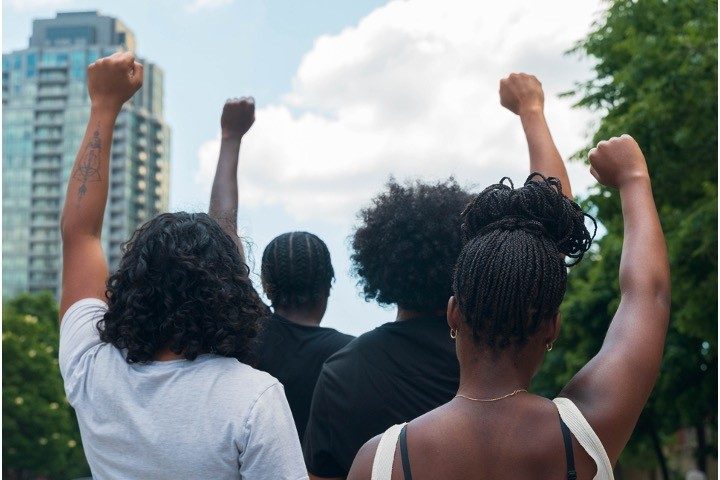
What is the statute of limitations, so to speak, on slavery-based claims such as “reparations”? No one has provided any such time frame despite slavery having ended in the United States back in 1865-’66. But one academic has offered a different kind of specificity: estimating how many minorities each white child will have to support under reparations models.
While approximately 70 percent of Americans oppose giving the handouts euphemistically known as “reparations” to descendants of black American slaves, there are stark racial/ethnic divides on the issue. “Most black Americans, 74%, favor reparations, compared with 15% of white Americans,” related the New York Post in 2019. “Among Hispanics, 44% favor reparations.” What’s more, the effort has gained great traction in the Democrat Party.
It may gain more traction, too, if Professor Emeritus Gunnar Heinsohn, who has taught at the University of Bremen and the NATO Defense College, is correct. As he wrote last week, “Thanks to Critical Race Theory, America’s white children are being steadily enlightened about their ‘white privilege’ (Peggy McIntosh, 1989). Already, 62 percent of Americans demand that schools teach about systemic white racism. White children are made aware of their historical debt — primarily, but not only, to black Americans.”
To be precise, the poll Heinsohn cites, by UMass Amherst, found that 62 percent of Americans believe schools should teach “a lot” or “some” “about racial inequality.” So it apparently didn’t ask respondents about “systemic racism” per se (poll questions’ phraseology can greatly influence results).
But another statistic the professor provides illustrates something relevant about minority status. “By 2030, of every 1,000 children worldwide, 15 will be U.S. whites (15/1,000),” he informs. “Corresponding figures for all regions can be obtained from the U.N.’s World Population Prospects.”
Elaborating on reparations realities, Heinsohn also writes that
white kids are being encouraged to pay reparations to black Americans, three quarters of whom already count on such redress. However, white children also hear debates about whether U.S. blacks are actually entitled to more aid than blacks in sub-Saharan Africa, who were robbed by slave traders of the progress — such as the largely missing industrialization — that their enslaved brethren could have brought about. Already in 1999, the West’s debt to Africa was calculated at $777 trillion, payable within five years. In short, America’s white children are getting ready to do something for all Africans. Harvard University provided them with an example when it committed, in April 2022, $100 million for slavery reparations.
In 2030, blacks in sub-Saharan Africa will have 270 out of 1,000 children worldwide, plus another 30 in the global — mostly American and Brazilian — diaspora (300/1,000 total). So 15 white U.S. children will not only face the challenge of taking back vital industries from cognitively superior East Asians (135/1,000) and caring for ever more of their own elderly, but also want to give 300 black African peers a helping hand.
What must the curricula look like in American kindergartens and schools today in order to not only inspire, but also empower these 15 to deliver material and social progress for the 300 in due time?
So even though “poor kids are just as bright and just as talented as white kids,” as Joe Biden put it in 2019, some are expecting those white kids to be future slaves to much of the rest of the world. But how much? Heinsohn delves into this and provides projections under different reparations models:
- Latin American countries could be included as well because they’re also considered victims of white oppression. With south-of-the-border children poised to be 75 of every 1,000 of the world’s kids in 2030, this means those 15 white youngsters will have to shoulder 375 people — this translates into each white individual supporting 25 “minorities.”
- In fairness, though, indigenous Europeans are complicit in the oppression, having colonized much of the world and bequeathing white guilt to Caucasian Americans, Heinsohn points out. And since Europeans will have 25 of the world’s 1,000 children in 2030, this reduces each white’s burden from those 25 minorities to nine or 10.
- If Arabs (75 children per 1,000 in 2030) and Central and South Asia (275 children per 1,000 in 2030) are included, however, the burden for each “guilty” white then becomes 16 downtrodden souls, Heinsohn concludes.
This said, a redressing of “historic wrongs” would be easier, the professor points out, if whites were not going to represent only six percent of the Earth’s 2030 young, but the 36 percent they were in 1914.
Yet there’s another calculation to be made, if we’re to be wholly fair. After all, if there can be collective guilt, there can also be collective credit. As to this, it’s not just that whites were the first group to end slavery and birthed our modern concept of human rights, but also this:
Their Western Civilization has created virtually all the life-saving/enhancing advances — modern science and medicine and our conveniences and luxuries such as refrigeration, indoor plumbing, heat, air conditioning, TVs, and computers — that have enabled populations to burgeon and man to enjoy prosperity and material fulfillment previously unknown in history. Thus are royalty checks for every white person in order.
So what will the situation look like, and which way will money be transferred, once the royalties are subtracted from the reparations? We could attempt to figure that out — or just forget the whole matter and try living our lives based on justice and not jealousy and “just us.”



